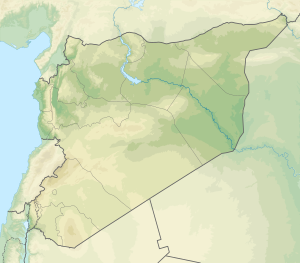
Back Tell Sabi Abyad Afrikaans تل صبي أبيض Arabic Tell Sabi Abyad Catalan Tell Sabi Abyad German Tell Sabi Abyad Spanish Tell Sabi Abyad Finnish Tell Sabi Abyad French תל סבי אבייד HE Tell Sabi Abyad Dutch
تل صبي أبيض | |
 Excavations at Tell Sabi Abyad. | |
| Location | Syria |
|---|---|
| Region | Balikh River valley |
| Coordinates | 36°30′14″N 39°05′35″E / 36.504°N 39.093°E |
| Type | settlement |
| Area | 11 hectares (27 acres), 15–16 hectares (37–40 acres) (with city walls), 4 hectares (9.9 acres) (outer town) |
| Height | 2 metres (6 ft 7 in) |
| History | |
| Material | clay, limestone |
| Founded | c. 7550 BC |
| Abandoned | c. 1250 BC |
| Periods | Pre-Pottery Neolithic B, Neolithic, Transitional Neolithic-Halaf, Early Bronze Age-Halaf, Middle Assyrian period |
| Site notes | |
| Excavation dates | 2002–ongoing |
| Archaeologists | C. Castel, N. Awad, Peter Akkermans |
| Condition | ruins |
| Management | Directorate-General of Antiquities and Museums |
| Public access | Yes |
Tell Sabi Abyad (Arabic: تل صبي أبيض) is an archaeological site in the Balikh River valley in northern Syria. It lies about 2 kilometers south of Tell Hammam et-Turkman.The site consists of four prehistoric mounds that are numbered Tell Sabi Abyad I to IV. Extensive excavations showed that these sites were inhabited already around 7500 to 5500 BC, although not always at the same time; the settlement shifted back and forth among these four sites.[1]
The earliest pottery of Syria was discovered here; it dates at ca. 6900-6800 BC, and consists of mineral-tempered, and sometimes painted wares.
- ^ Fieldwork campaign: Tell Sabi Abyad (Syria) universiteitleiden.nl

